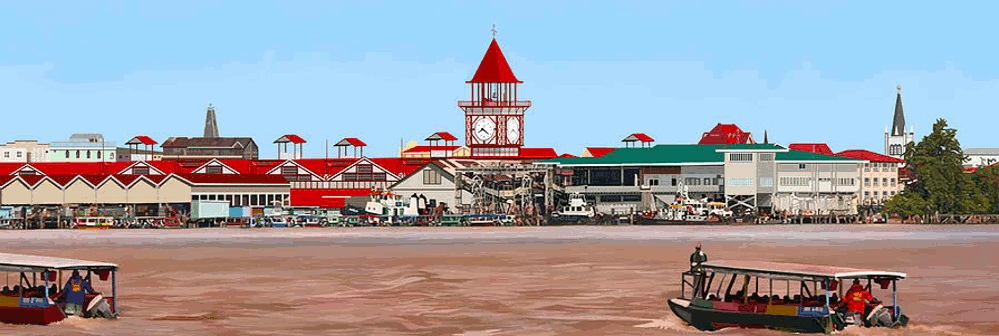THE Diwali celebration continues among pious Hindu Guyanese thru Wednesday to end their fasting and observance. Diwali was observed in New York on Saturday evening, the big night, the darkest night of the year, by tens of thousands of Guyanese Hindus in Greater Richmond Hill and other parts of the city with prayers, lighting of deyas and dinner. Tens of thousands of Hindus from other countries also observed the festival with lighting of deyas and fireworks and distributing sweets, foods, chai (tea), and other soft drinks on the streets in Richmond Hill, the hub of Indo-Guyanese commercial activities.
The Guyanese and Punjabis of Richmond Hill lit up the sky; as crowds clustered to take in the night-time spectacle. Diwali celebrations culminated on Monday — the fifth day of the celebration that commenced last Thursday. The day after Diwali is known as Goberdhan and Hindus went to mandir for services. Some Guyanese Mandirs concluded their nightly service on Monday night, while others continued thru Wednesday evening.
During Diwali, Hindus propitiate Goddess Lakshmi, the creator of wealth for Hindus, at their homes and in temples. It is traditional for Guyanese Hindus to conduct services at the mandirs after the evening prayers and lighting of deyas at home. In the mandirs, Pandits conducted puja with the devotees in rapt attention. Social distancing was observed in some mandirs; devotees had on masks. At the conclusion of service, bhojan or food was distributed. Diwali was also observed in Florida, Houston, Dallas, Jersey City, and in other areas where Hindus are clustered and where Mandirs are established. Guyanese Mandirs were established in NY beginning in the late 1970s, Masjids during the 1980s, and churches in the 1990s.
For Diwali the temples, homes, and businesses in greater Richmond Hill were decorated with fancy flickering electronic lights mounted on walls or displayed on the ground around buildings. On the sidewalks, vendors had all kinds of Diwali paraphernalia. Huge multi-coloured and multi-shaped deyas and other paraphernalia that are on sale on the sidewalks in front of stores on Liberty and 101 Avenues, the hub of West Indian and Asian Indian shopping. Stores were prettily decorated with party favours and various Hindu emblems. Even non-Indian stores, Korean vegetable shops and American shops, were dressed up for the occasion. Appropriate bhajans blared over loud speakers from stores including the Koreans. Sweet-smelling incense and the aroma of delicious foods wafted in the air. Wires of lights hung down from rooftops similar to Christmas festivals. In addition to community shops, American stores, fast food outlets and pharmacies displayed signs of Happy Diwali. (For Eid, Easter and Christmas, there are similar displays of greetings and light decorations in the Guyanese neighbourhoods).

On CBS Channel 2 News on Saturday morning, the weather reporter expressed Diwali greetings to Hindus, explained the meaning of light over darkness, and displayed several photos of the celebration at the homes of Hindus. He said: “It is a most beautiful and joyous celebration with spectacular lighting of earthen lamps lit with oil that are called deyas, feasting, and distribution of sweets. It is five days of worshipping, but Saturday evening is the big one. It is wonderful. Shubh Diwali to all celebrants. I hope I said it right.”
There was no shortage of excitement for the event outdoors on the streets in front of the Gurudwaras, the temples of Sikhs. Hundreds thronged 101st Avenue for the fireworks in front of the Gurudwaras. Indo Guyanese, Trinis, and Sikhs (Punjabis) share space in greater Richmond Hill which is inundated with dozens of Mandirs, Gurudwaras, Masjids, and Guyanese Christian churches.
The practising of their varied faiths is similar to the worshipping traditions in Guyana including distribution of parsad, sirni, and food at the conclusion of service in mandirs, mosques, and churches – a very unique tradition among Indians. Some Hindus have a little Kutiya in front of, or at the back of their homes with colourful Jhandis. Almost every Hindu home has an altar for worshipping. Deyas were lit next to Jhandis and the American flag, signalling their loyalty and gratitude for being allowed a life in America. Guyanese introduced their faiths in America when they first began coming during the 1960s.
The weather was perfect for the Diwali celebration. For the first time in several years it did not rain. It rained continuously from Wednesday thru Friday with bright sunshine on Saturday. However, it was very windy as it usually is around this time of the year. It was also cold as the winter solstice is approaching. The heavy winds did not make it easy for the deyas to stay lit. Nevertheless, thousands of homes in Richmond Hill/Ozone Park did deyas lit on their steps and around the house in beautiful formation. The cold weather and wind did not dampen enthusiasm and the celebratory spirit of the festival as celebrants dressed up in traditional attire for the occasion. They had a wonderful time taking on the lights and the beauty of the atmosphere.
I noticed that Guyanese rum shops or bars and restaurants were empty on Diwali day, suggesting that they depend on Hindus for business. Hindus are forbidden to consume alcohol and or eat non-vegetarian foods around religious festivals.

